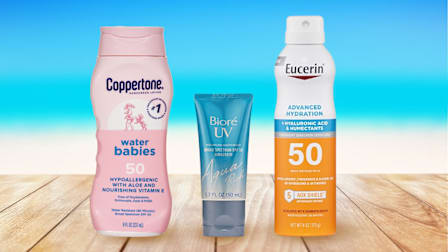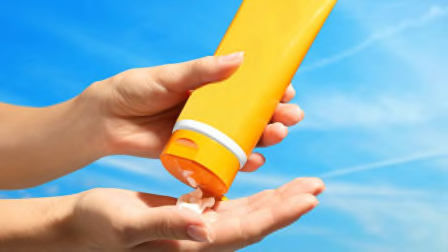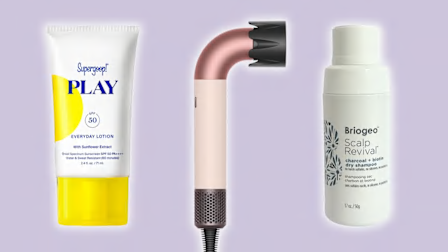Best Spray Sunscreens of 2025
These are the ones that did best in CR's tests. Plus, tips to make applying spray sunscreen safer and more effective.
When you shop through retailer links on our site, we may earn affiliate commissions. 100% of the fees we collect are used to support our nonprofit mission. Learn more.

Many people—children and adults—prefer to use spray sunscreen. It’s easier to apply and great for covering hard-to-reach spots (such as the scalp, the back of the neck and shoulders, and the tops of feet). Some say these sunscreens feel lighter and less gloppy on the skin than lotions.
But there’s a downside to spray sunscreens, too. If you aren’t careful, you might not actually be applying enough of the product to give you proper protection, especially on windy days. Benzene exposure may also be a concern. In recent years, some sunscreen sprays have been recalled for contamination with the chemical, which is known to cause cancer.
How can you get the benefits of sprays and reduce the risks? Follow these tips and check out the highest-scoring spray sunscreens in CR’s tests.
Tips for Applying Spray Sunscreen
Be conscious of where you use sprays. “Make sure you apply spray sunscreen in a well-ventilated area,” says Ashita Kapoor, associate director of product safety at Consumer Reports. Sprays can cause lung irritation if you accidentally breathe them in. Some contain titanium dioxide, which, when inhaled in large amounts, has been linked to cancer in rodent studies. And sprays are flammable. “When applying spray sunscreen, make sure you are not near a grill or another heat or open flame source,” she says. Even when your spray sunscreen is thoroughly rubbed in and dry, you should still stay away from flames.
How CR Tests Sunscreen
We use the Food and Drug Administration’s sunscreen testing protocol as a model. But as with all products, we do our own scientific, laboratory-based testing to identify differences in performance and give consumers a comparative evaluation. We buy sunscreens at retailers the way consumers do and test three samples of each product, each from different manufacturing batches. For SPF, we test the sunscreens on three people, which is fewer than the FDA’s protocol calls for, but we use a statistical analysis to verify our results. A technician applies a standard amount of each product to a 2x3-inch rectangle on a panelist’s back. (If the product is water-resistant, they soak in water for 40 or 80 minutes based on the product’s resistance claims.) Then we expose smaller sections of the rectangle to five or six intensities of simulated sunlight based on how quickly the panelist’s skin burns without protection. We also use a reference sunscreen with known performance to ensure accuracy. A day later, a technician examines the skin for redness and determines the sunscreen’s SPF.
To test for UVA, we apply sunscreen to plastic plates, expose them to UV light, and measure the amount of UVA and UVB rays that are absorbed. This test, like the UVA test in Europe, uses a process similar to the UVA test the FDA requires. But the test we use allows us to determine the degree of UVA protection, while the FDA test does not. The FDA test is pass-fail; a sunscreen that just passes gets the same designation—broad-spectrum—as one that screens out even more UVA. Our ratings are developed from the average results of all the SPF and UVA tests for a sunscreen, as well as how much the average CR-tested SPF varies from the SPF listed on the label.
Best Spray Sunscreens
These spray sunscreens are at the top of our ratings. CR members can delve into our full sunscreen ratings of dozens of lotion, spray, facial, and stick products.
@consumerreports Always apply spray sunscreen in a well-ventilated area—and keep sprays away from an open flame. Learn more through the link in our bio. #skintok #sunscreen #skinhealth #sunscreenisimportant
♬ original sound - Consumer Reports
































